
8 climbing flowers you must have in your garden
The most beautiful varieties of blue climbing plants
Contents
Blue flowerings bring infinite elegance to the garden, which can also be admired in climbing plants and voluble lianas adorning pergolas and trellises. While the blue colour is primarily represented in this category of plants by clematis, a few other climbing plants with stunning blue flowers offer shades ranging from sky blue to indigo, such as Plumbago, Solanum, and certain Wisterias. These strong-tempered climbers should be planted in full sun or partial shade, either alone to enjoy their beauty or paired with romantic roses, or white, yellow, or pink flowerings.
Here are some of the most beautiful blue climbers in their category!
Clematis alpina 'Francis Rivis'
Clematis alpina are renowned for the blue of their small, trailing, bell-shaped flowers and the early onset of their flowering. The‘Francis Rivis’ variety boasts these beautiful features: it is among the lightest blue flowerings, a periwinkle blue on its 4 tepals highlighted by a white touch at its heart. This charming clematis climbs quickly on a trellis or wall, reaching up to 3m high and 1.5m wide, and displays its flowers from April onwards, then again in October. The flowers then transform into decorative feathery fruits. The deciduous foliage is dentate, ranging from light green to medium green. As a Clematis alpina, ‘Francis Rivis’ does not necessarily require pruning, unless you prefer to limit its growth.
An astonishing form resulting from hybridization has appeared on the market, ‘Ocean Pearl’, featuring fluffy lavender pom-pom flowers.

Clematis Francis Rivis
Plumbago capensis or auriculata
Plumbago, also known as Cape leadwort, is a stunning semi-climbing plant from South Africa, where it can grow up to 5 m. Here, Plumbago remains more modest in size, reaching up to 2.50 m in all directions depending on the variety when planted in open ground, but it especially delights us with one of the sweetest and most charming blue flowerings in the plant kingdom! It features a sky blue or powder blue hue, ensuring a strong presence with large terminal inflorescences composed of 20 cm long panicles, resembling the flowers of Phlox. The plant is semi-evergreen, retaining its beautiful foliage in mild climates. Of course, it will only thrive in temperate regions, as it is not very hardy (down to -5°C). Therefore, it is best reserved for coastal gardens, where Plumbago will be covered in a blue haze all summer long, until the frosts! You can also place it in a large pot, in a greenhouse, or store it away at the first signs of cold.
→ Learn all about Plumbago in our complete guide: Plumbago, Cape leadwort: growing and care.
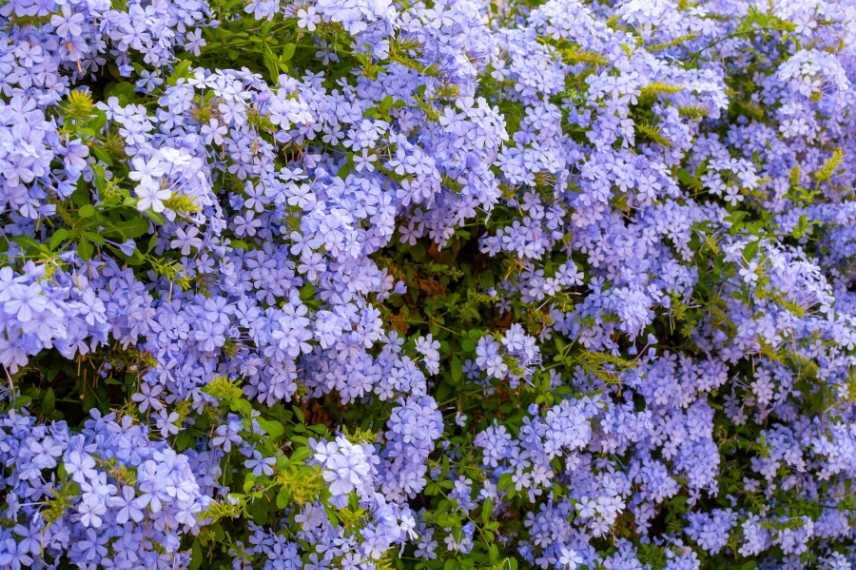
Plumbago capensis
Discover other Climbers
View all →Available in 0 sizes
Available in 0 sizes
Available in 0 sizes
Available in 0 sizes
Available in 0 sizes
Available in 1 sizes
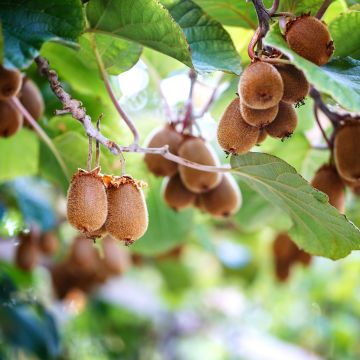
Available in 2 sizes
Available in 1 sizes
Available in 1 sizes
The blue Solanum jasminoides
Solanums are available in white and blue, with Solanum jasminoides Blue being somewhat less common in gardens, yet it is one of the most remarkable evergreen lianas, ideal for mild climate gardens, along the Atlantic coast, the Breton shores, or the Mediterranean. This Brazilian climbing plant is indeed sensitive to cold, as it hardly withstands temperatures below -5°C. The very light blue of its star-shaped flowers, washed with mauve, and supported by golden yellow anthers is a delight for many months, from June to October, or even longer in suitable climates. Its semi-evergreen foliage turns red with the cold. The Solanum jasminoides blue can quickly cover a large wall or a beautiful pergola in the sun, as it grows vigorously up to 4 m high with a spread of 2 m. In seaside gardens, it is a truly elegant choice and withstands drought well once established.
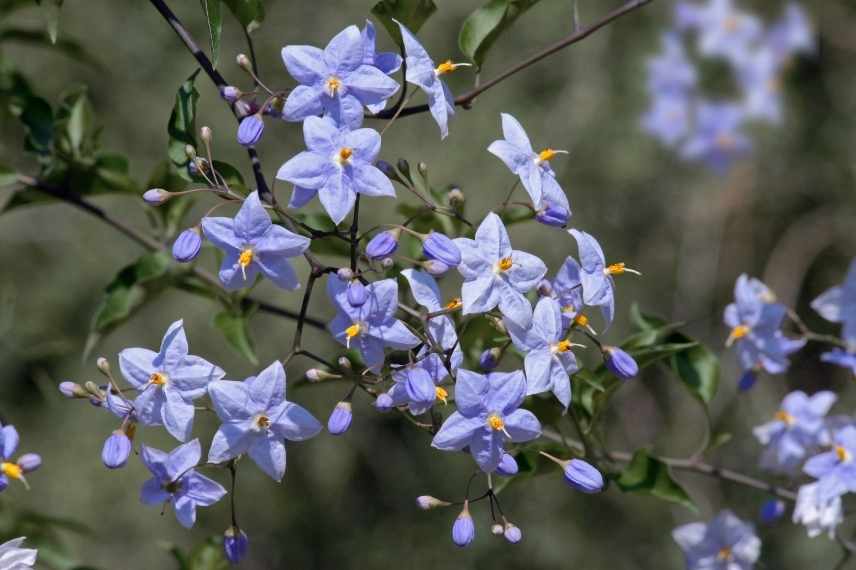
Solanum jasminoides
Read also
Designing a blue gardenClematis 'Blue Light'
Nothing quite like very hardy clematis to bring blue hues to any garden. The clematis ‘Blue Light’ is a little marvel with large double lavender-blue flowers, forming beautiful inflorescences with numerous incurved petals, 12 to 15 cm in diameter, the heart of the flower remaining slightly greenish. In full bloom, they almost resemble certain Dahlias, with their large pompom shape. The foliage is also exuberant. The abundant flowering, throughout the plant, occurs initially from late May to June, then returns in September. It climbs easily up to 2.5 m or even 3 m and is completely hardy. ‘Blue Light’ is a sumptuous variety to plant in full sun or partial shade to fully enjoy its soft colour.

Clematis ‘Blue Light’®
Clematis viticella 'Perle d'Azur'
Here is another clematis of interest if you are looking for a large format to adorn a wall, a hedge, or a large pergola, as Clematis viticella ‘Perle d’Azur’ climbs up to 5 m high with a spread of 2 m. Like the clematis ‘The President’, it is a very old variety from the late 19th century, well-known among gardeners who love blue! Indeed, its single flowers of pale blue tinged with greenish cream by the stamens provide a generous flowering that covers the foliage in mid-summer, creating a spectacular blue curtain on the upper part of the plant!
It is very hardy, with deciduous foliage like most clematis, and ideally thrives in light partial shade to better highlight its light blue hue. Preferring cool, fertile soil, you should plant its base in the shade and its head in the sun, as is commonly said for clematis.
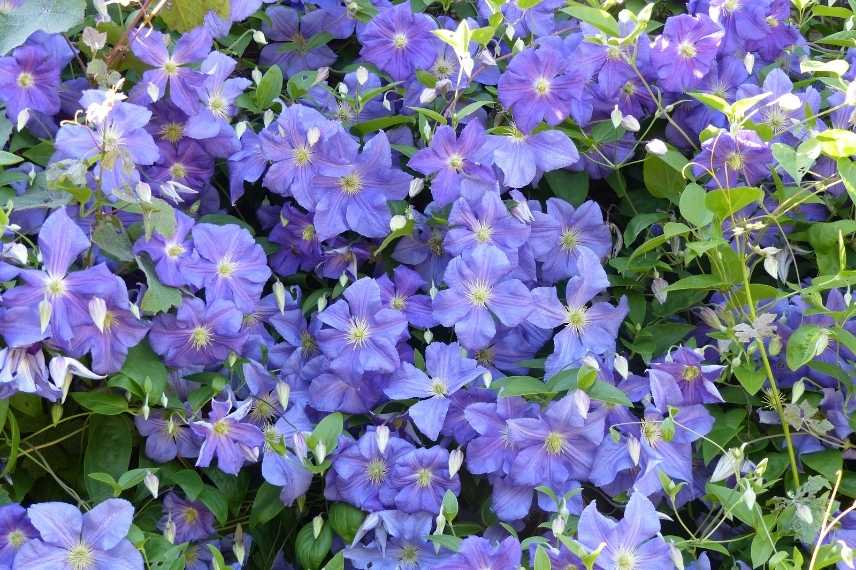
Clematis viticella ‘Perle d’Azur’
Passiflora caerulea
Here is Passiflora caerulea, a climbing liana with an undeniably exotic look, not as frost-sensitive as one might think, and it certainly deserves to be mentioned among our blue climbers for its uniqueness! Often referred to as the passion flower, it features a crown of purple-blue filaments between green stamens and white petals, with a long flowering period occurring between July and November. Its leaves are divided into several lobes, a bright green, almost palmate, which adds to its lush appeal. This highly sophisticated botanical rarity, even though it is not entirely blue, brings an extravagant and almost tropical touch to a garden, especially as it easily and quickly covers trellises, walls, and even tree trunks, reaching lengths of up to 8 m, with a spread of 3 to 4 m. It thrives in partial shade or full sun, in rather cool and well-drained soil.
It can truly adapt to many regions, as it withstands temperatures down to -12°C. Just be sure to mulch its base in winter with about ten centimetres of material.
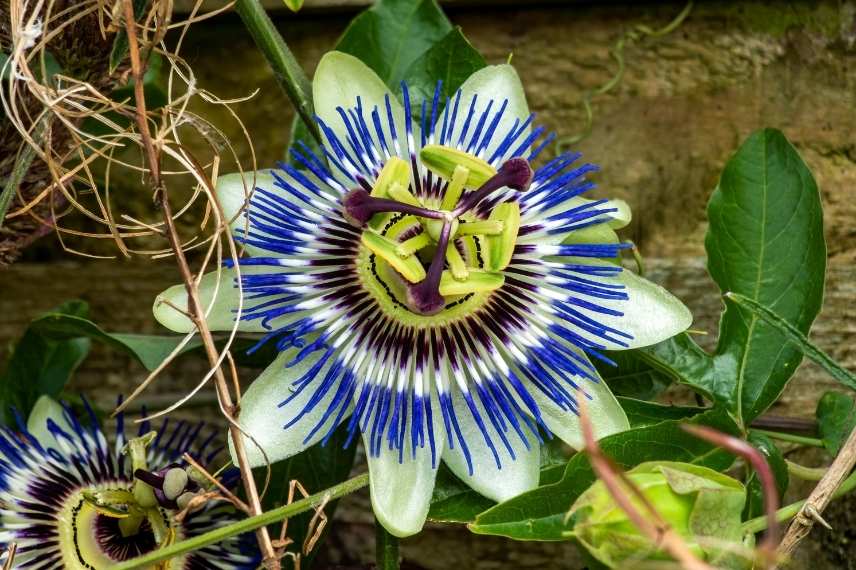
Passiflora caerulea
Sollya heterophylla
Not so common… not quite a climbing plant… rather a climbing shrub as it grows up to a maximum of 2 m. Sollya heterophylla captivates at first glance with the azure blue of its flowering and its countless pendulous little bells. This charming climbing plant from the Pittosporaceae family hails from Australia and Tasmania, giving it a somewhat non-hardy character (down to -6°C). But that is its only flaw, as it grows quickly, withstands drought well, blooms from June to September, and, another lovely quality of this plant to discover, its beautiful elongated foliage is evergreen, allowing it to dress a trellis or wall of a house even in winter. It requires well-drained soil, full sun, or partial shade in the south of the country. Its small size also allows it to be grown in a pot on the terrace fixed to a double stake, which can be stored for winter.
The‘Ultra Blue’ cultivar offers an even more intense, magnificent ultramarine blue.

Sollya heterophylla
Wisteria 'Blue Moon'
Finally, although wisterias display more mauve than truly blue flowerings, one of them stands out for its very blue colour: Wisteria ‘Blue Moon’. This is an American wisteria, a Wisteria frutescens var. macrostachya. More compact than its Chinese and Japanese cousins, ‘Blue Moon’ flowers in long, dense lavender-blue clusters, fragrant, and quite late for a wisteria: typically in May or June. It generally blooms again at least once, sometimes twice, until September. It thrives in partial shade, as well as in full sun, provided it has rich, well-drained soil. Particularly hardy (it tolerates negative temperatures down to -18°C) and not afraid of late spring frosts, this beautiful American wisteria grows up to 4m in height.

Wisteria frutescens ‘Blue Moon’
And also...
Don’t forget Clematis integrifolia, sometimes tinged with mauve like the stunning Clematis ‘Arabella’, the clematis alpina, Clematis viticella, which has some beautiful bluish cultivars, and as an annual plant, the charming Morning glory or Ipomoea which flowers close in the evening. The Thunbergias grandiflora and laurifolia are also very beautiful climbing plants suited for mild climates.
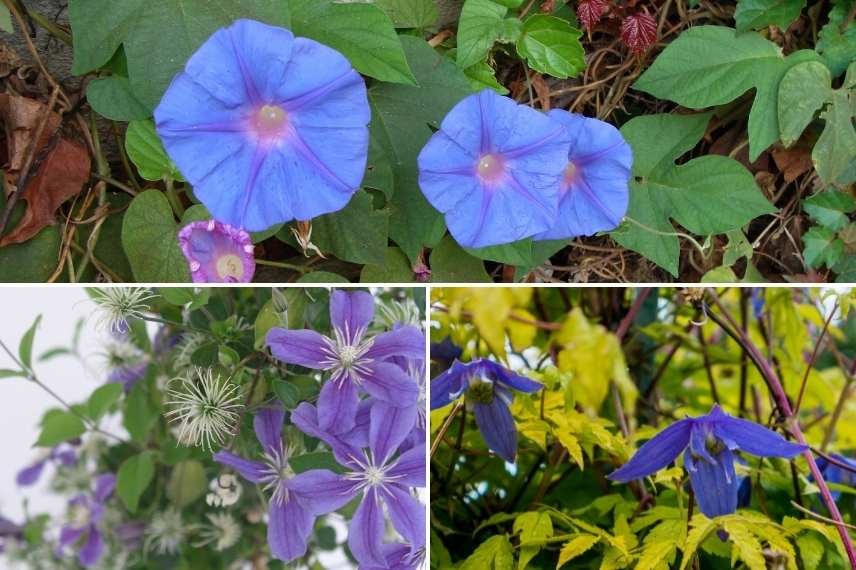
Morning Glory, Clematis ‘Arabella’ and Clematis ‘Lagoon’
- Subscribe!
- Contents
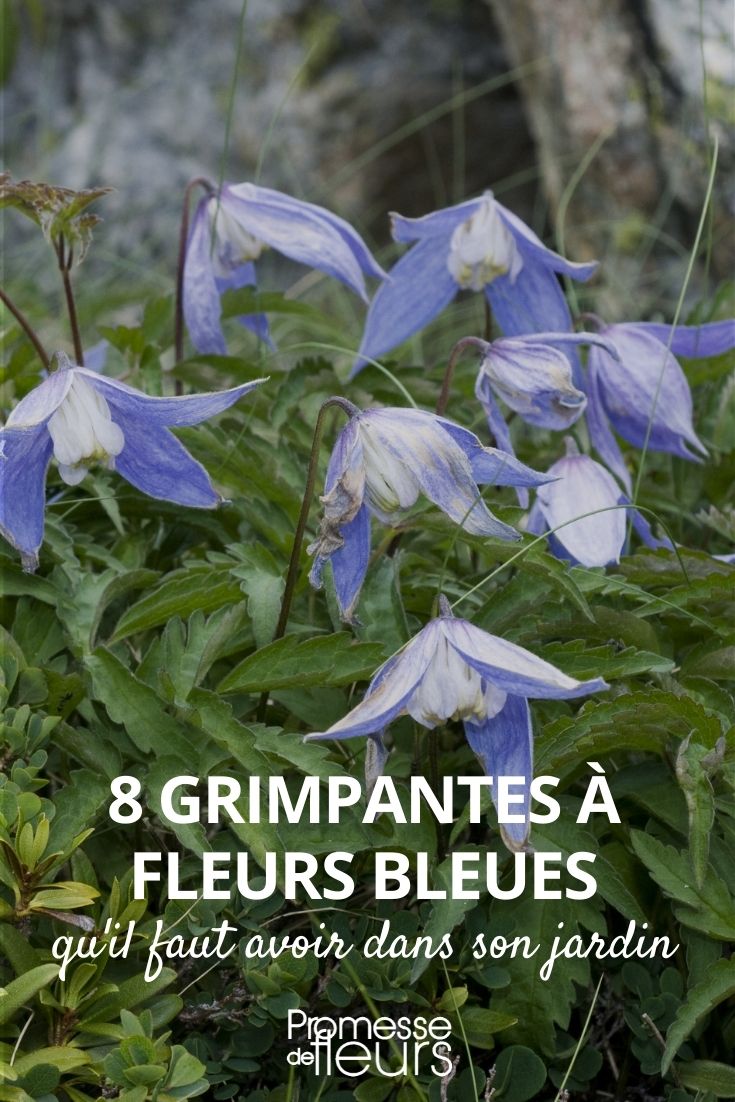































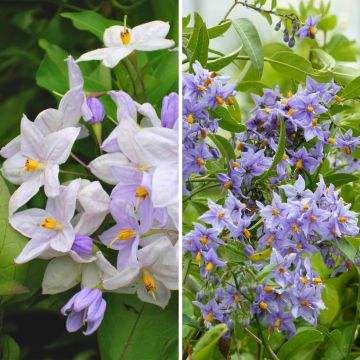


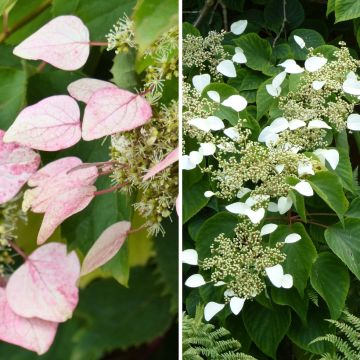



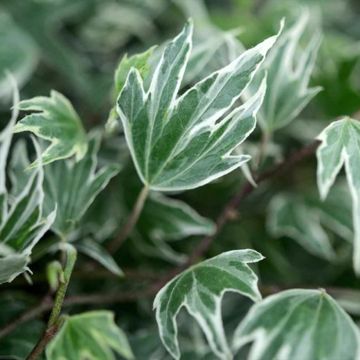
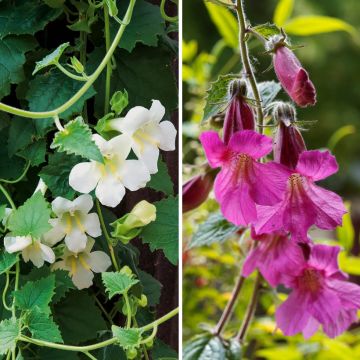
Comments